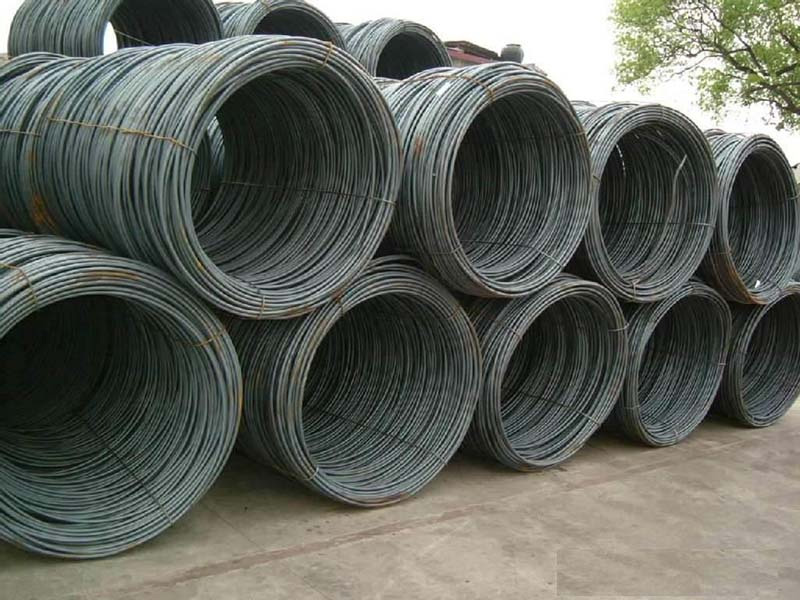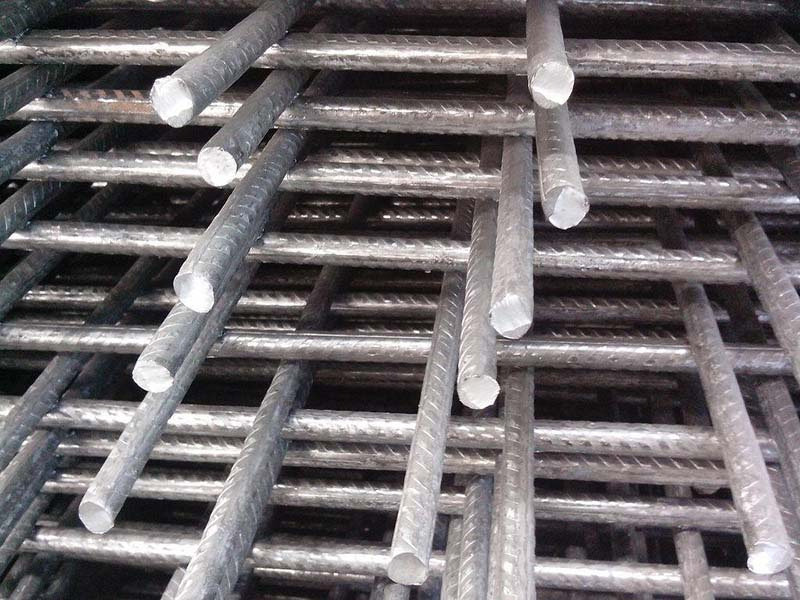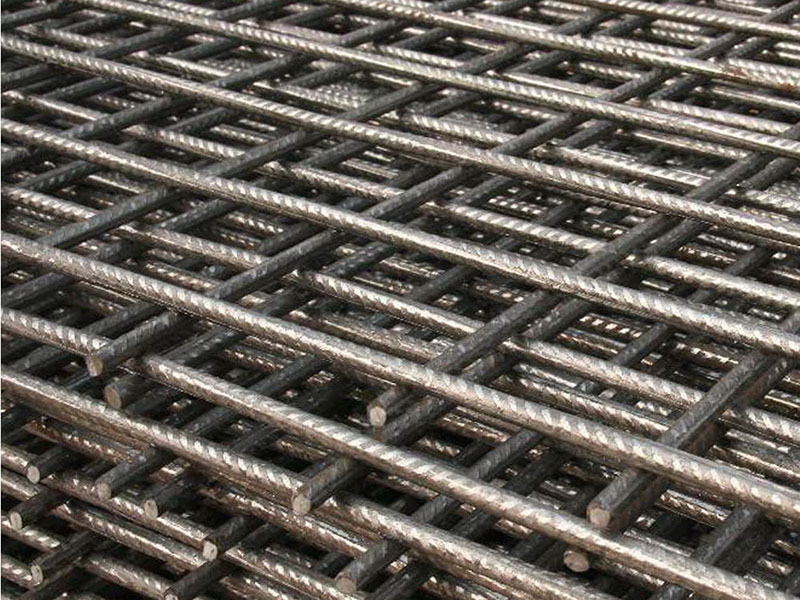

Different steel bars are used in different places and expressed in different ways. With the continuous development of industrial technology, people also put forward higher requirements for steel. Steel plate is one of the four major varieties of steel (plate, pipe, profile and wire), and it is also a common building material.

During reinforcement welding, the application scope and inspection quantity of various welding methods shall comply with the provisions in the table below.
Application scope and inspection quantity of reinforcement welding method
1. Welders engaged in reinforcement welding construction must hold welder examination certificate before they can work. (1.0.3)
2. All kinds of steel bars and plates to be welded shall have quality certificates; Welding rods and fluxes shall have product certificates. (3.0.5)
3. Before the formal welding of the project, the welders participating in the welding shall conduct the welding process test under the site conditions, and the formal production can be carried out only after passing the test. The test results shall meet the requirements of quality inspection and acceptance. (4.1.3)
(before the commencement of the project or the formal welding of each batch of reinforcement, no matter what welding process method is adopted, the welding process test shall be carried out under the same conditions as the production, so as to understand the welding performance of reinforcement, select the best welding parameters and master the technical level of welders responsible for production.
At least one group of test pieces shall be made for each brand and specification of reinforcement. If it fails for the first time, the process shall be improved and the parameters shall be adjusted The number shall be recorded for reference The test results of joint specimens (tensile / bending / shear) shall meet the requirements of quality inspection and acceptance

4. Before reinforcement welding, rust spots, oil stains and impurities on the welding parts of reinforcement and steel plate and the surface of the contact between reinforcement and electrode shall be removed; When the end of the reinforcement is bent or twisted, it shall be straightened and cut off. (4.1.3)
5. When flash butt welding, arc welding, electroslag pressure welding and pneumatic welding are carried out for ribbed reinforcement, the longitudinal rib shall be placed and welded to the longitudinal rib. (4.1.4)
6. The quality inspection and acceptance of steel bar welded joints shall be carried out according to the inspection batch, and shall be divided into main control items and general items. The quality inspection shall include appearance inspection and mechanical property inspection. (5.1.2)
7. The welding joints of longitudinal stressed reinforcement, including the connection mode inspection of flash butt welding joints, arc welding joints, electroslag pressure welding joints and pneumatic welding joints, and the mechanical property inspection provisions of the joints are the main control items. (5.1.3)
8. The joint connection method shall meet the design requirements and shall be fully inspected. The inspection method is observation.
During the appearance inspection of welded joints, the welder shall first conduct self inspection on the welded joints; Then it shall be inspected by the professional quality inspector of the construction unit; The supervision (construction) unit shall make acceptance records.
During visual inspection of welded joints of longitudinal stressed reinforcement, 10% of welded joints shall be randomly selected from each inspection batch. According to the inspection results, when the number of unqualified items of appearance quality is less than or equal to 10% of the sampling number, the appearance quality of the welded joint is evaluated as qualified.
When the unqualified number of a small item exceeds 10% of the sampling number, the small items of the batch of welded joints shall be rechecked one by one, and the unqualified joints shall be removed; After taking repair or welding repair measures for the joints that fail to pass the appearance inspection, they can be submitted for secondary acceptance.
9. During mechanical property inspection, test pieces shall be randomly selected for test after the joint appearance inspection is qualified.

(1) Project name and sampling position;
(2) batch number and batch number;
(3) Steel grade and specification;
(4) .welding method;
(5) Name of welder;
(6) construction unit;
(7) Mechanical property test results. (5.1.6)
10. Tensile test results of flash butt welded joints, arc welded joints, electroslag pressure welded joints and pneumatic welded joints of reinforcement. (strong clause 5.1.7)
(1) The tensile strength of 3 hot-rolled steel bar joint specimens shall not be less than the specified tensile strength of the grade of steel bar; The tensile strength of rrb400 reinforcement joint specimen shall not be less than 570n / mm;
(2) At least 2 test pieces shall be broken outside the weld and shall be ductile fracture. When the above two requirements are met, the tensile strength of this batch of joints shall be evaluated as qualified.
When the test results show that the tensile strength of 2 specimens is less than the specified tensile strength of the reinforcement, or brittle fracture occurs in the weld or heat affected zone of 3 specimens, this batch of joints shall be judged as unqualified at one time.
When the test results show that the tensile strength of one specimen is less than the specified tensile strength of the reinforcement, or two specimens have brittle fracture in the weld or heat affected zone, and their tensile strength is less than 1.10 times of the specified tensile strength of the reinforcement, retest shall be carried out. During the retest, another 6 test pieces shall be cut.
According to the re inspection results, when the tensile strength of one test piece is still less than the specified value, or three test pieces are broken in the weld or heat affected zone, showing brittle fracture, and its tensile strength is less than 1.10 times of the specified tensile strength of the reinforcement, the joint shall be judged as unqualified.
(Note: Although the joint specimen is broken in the weld or heat affected zone and shows brittle fracture, but its tensile strength is greater than or equal to 1.10 times of the specified tensile strength of the reinforcement, it can be treated as ductile fracture outside the weld or heat affected zone.)
11. During the bending test of flash butt welded joint and pneumatic welded joint, the metal burr on the pressure surface and the rough convex part of the pier shall be eliminated, and shall be flush with the appearance of the reinforcement. (article 5.1.8)
The bending test can be carried out on universal testing machine and manual hydraulic bending tester. The weld shall be at the bending center point, and the bending center diameter and bending angle shall comply with the provisions of table 5.1.8. (Note: the bending center diameters of hpb235, HRB335, HRB400 and HRB500 are 2D, 4D, 5D and 7d respectively; the bending angle is 90 degrees)
When the test results are bent to 90 degrees and there are no cracks on the outside of 2 or 3 test pieces (including welds and heat affected zone), the bending test of this batch of joints shall be evaluated as qualified.
When all three test pieces are cracked, the batch of joints shall be judged as unqualified at one time. When two test pieces are cracked, they shall be retested. During re inspection, another 6 test pieces shall be cut. According to the re inspection results, when 3 test pieces are broken, the batch of joints shall be judged as unqualified.
(Note: when the lateral crack width on the outside of the test piece reaches 0.5mm, it shall be deemed to have been broken.)
(1) Ordinary Reinforcement Classification (P ≤ 0.045%, s ≤ 0.050%)
(2) High quality Reinforcement Classification (P and s ≤ 0.035%)
(3) High quality Reinforcement Classification (P ≤ 0.035%, s ≤ 0.030%)
(1) Carbon steel: Steel A. low carbon steel (C ≤ 0.25%); b. Medium carbon steel (C ≤ 0.25 ~ 0.60%); c. High carbon steel (C ≥ 0.60%).
(2) Alloy steel: A. low alloy steel (total alloy element content ≤ 5%); b. Medium alloy steel (total alloy element content > 5 ~ 10%); c. High alloy steel (total alloy element content > 10%).
According to the forming method
(1) Annealed: A. hypoeutectoid steel (ferrite + pearlite); b. Eutectoid steel (pearlite); c. Hypereutectoid steel (pearlite + cementite); d. Ledeburite steel (pearlite + cementite).
(2) Normalized: A. pearlite steel; b. Bainitic steel; c. Martensitic steel; d. Austenitic steel.
(3) No phase transformation or partial phase transformation of steel 5. Classification by use
(4) Steel for construction and Engineering: A. ordinary carbon structural steel; b. Low alloy structural steel; c. Steel reinforcement.
(5) Steel structural steel
a. Steel for mechanical manufacturing: (a) quenched and tempered structural steel; (b) Surface hardening structural steel: including carburized steel, ammoniated steel and surface quenching steel; (c) Easy to cut structural steel; (d) Steel for cold plastic forming: including steel for cold stamping and steel for cold heading.
b. Spring steel
c. Bearing steel
(6) Tool steel: A. carbon tool steel; b. Alloy tool steel; c. High speed tool steel.
(7) Special performance steel: A. stainless and acid resistant steel; b. Heat resistant steel: including oxidation resistant steel, heat strength steel and air valve steel; c. Electric heating alloy steel; d. Wear resistant steel; e. Low temperature steel; f. Electrical steel.
(8) Professional steel – such as bridge steel, ship steel, boiler steel, pressure vessel steel, agricultural machinery steel, etc.
(1) Ordinary reinforcement classification
a. Carbon structural steel: (a) Q195; (b)Q215(A、B); (c)Q235(A、B、C); (d)Q255(A、B); (e)Q275。
b. Low alloy structural steel
c. General structural steel for specific purposes
(2) High quality steel (including high quality steel)
a. Steel structural Reinforcement Classification: (a) high quality carbon structural steel; (b) Alloy structural steel; (c) Spring steel; (d) Easy cutting steel; (e) Bearing steel; (f) High quality structural steel for specific purposes.
b. Tool Reinforcement Classification: (a) carbon tool steel; (b) Alloy tool steel; (c) High speed tool steel.
c. Special performance Reinforcement Classification: (a) stainless and acid resistant steel; (b) Heat resistant steel; (c) Electric heating alloy steel; (d) Electrical steel; (e) High manganese wear resistant steel.
(1) By furnace type of Reinforcement Classification
a. Open hearth steel: (a) acid open hearth steel; (b) Alkaline open hearth steel.
b. Converter steel: (a) acid converter steel; (b) Basic converter steel. Or (a) bottom blown converter steel; (b) Side blown converter steel; (c) Top blown converter steel.
c. Electric furnace steel: (a) electric arc furnace steel; (b) Electroslag furnace steel; (c) Induction furnace steel; (d) Vacuum consumable furnace steel; (e) Electron beam furnace steel.
(2) Reinforcement Classification are classified according to deoxidation degree and pouring system
a. Rimming steel; b. Semi killed steel; c. Killed steel; d. Special killed steel.
The steel grade of thick steel plate is basically the same as that of thin steel plate. In terms of products, in addition to bridge steel plate, boiler steel plate, automobile manufacturing steel plate, pressure vessel steel plate and multi-layer high-pressure vessel steel plate, some varieties of steel plates such as automobile girder steel plate (2.5 ~ 10mm thick), checkered steel plate (2.5 ~ 8mm thick), stainless steel plate and heat-resistant steel plate are crossed with the same plate.
In addition, the steel plate also has the material. Not all steel plates are the same. The material is different, and the place where the steel plate is used is also different
There are three specifications: thick steel plate, thin steel plate and flat steel. Its specification is expressed in millimeters conforming to “-” and width * thickness * length.
For example – 300 * 10 * 3000 represents a steel plate with a width of 300mm, a thickness of 10mm and a length of 3000mm.
Thick steel plate: the thickness is greater than 4mm, the width is 600 ~ 3000mm and the length is 4 ~ 12m;
Steel sheet: thickness less than 4mm, width 500 ~ 1500mm, length 0.5 ~ 4m;
Flat steel: 4 ~ 60mm thick, 12 ~ 200mm wide and 3 ~ 9m long.

For Further Details,Please Feel Free To Contact Us: